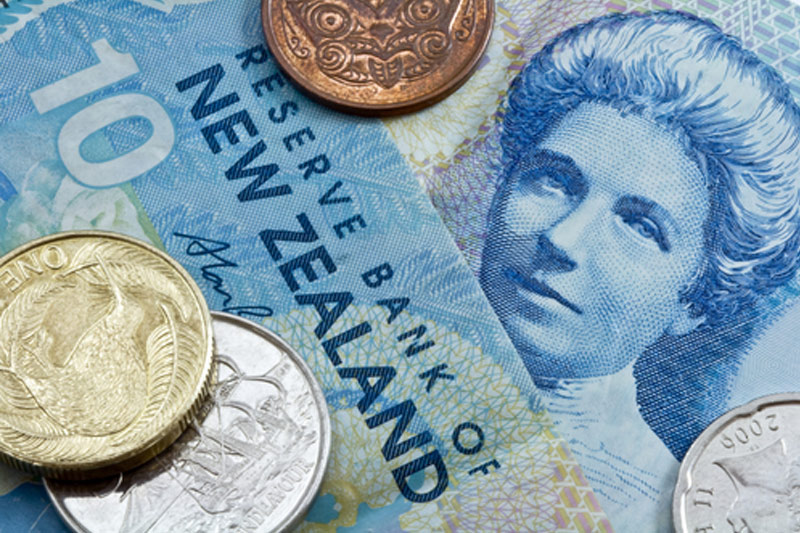Investing.com - The New Zealand dollar fell in early trading Wednesday on weaker-than-expected jobs data and comments from the central bank chief saying the curtrency is overvalued.
NZD/USD traded at 0.8694, down 0.43%, after the jobs data.
The New Zealand first quarter labour force survey showed an unemployment rate of 6.0%, compared to expectations for a dip to 5.9% and the labor cost index rising 0.3%, compared to an expectation of a 0.5% gain.
The data combined with earlier remarks from the Reserve Bank of New Zealand.
The New Zealand dollar is overvalued and the rate will be a factor in the extent and speed of future hikes in the official cash rate, Governor Graeme Wheeler said Wednesday.
"In such circumstances, the high exchange rate, along with new economic data, will be a factor in our assessment of the extent and speed with which the Official Cash Rate (OCR) needs to be raised," he said in a prepared speech.
Australia's AiGroup construction index is due at 0930 Sydney (2330 GMT). Last month it showed a rise of 2.0 points, but remained in the contraction zone at 46.2. Then comes March retail sales data at 1130 (0130 GMT) with a 0.4% gain expected.
AUD/USD traded flat at 0.9347 ahead of the data.
The Bank of Japan will release the minutes of its April 7-8 policy meeting at 0850 Tokyo (2350 GMT) and is expected to repeat the economy will stay on a gradual recovery track despite swings in demand before and after the April 1 sales tax hike.
USD/JPY held at 101.70, up 0.02%, before the minutes.
At 0945 in Beijing, HSBC's China April service PMI is due with the previous reading at 49.90.
Overnight, upbeat European economic indicators including a robust retail sales report sent investors chasing the euro and other risk-on currencies, which weakened the dollar.
In Europe, Eurostat, the European Union's statistical arm, reported that retail sales rose 0.3% in March, defying expectations for a 0.2% contraction. Retail sales in February were revised down to a 0.1% gain from a previously estimated 0.4% increase.
EUR/USD traded at 1.3925, down 0.02%, in early Asia.
The numbers sparked for demand for the euro as did upbeat Spanish jobless numbers.
Official data released earlier revealed that the number of unemployed people in Spain dropped by 111,600 in April, compared to expectations for a decline of 49,100, after a 16,600 fall the previous month.
Separately, the Markit Economics research group said that Spain's services purchasing managers' index rose to a six-year high of 56.5 last month, from a reading of 54.0 in March. Analysts had expected the index to tick up to 54.4 in April.
Italy's services PMI swung back into expansion territory last month, rising to 51.1 from a reading of 49.5 in March, beating expectations for an uptick to 50.4.
The euro zone's service-sector PMI came in unchanged at 53.1, in line with expectations.
Meanwhile in the U.S., data revealed that the country's trade deficit narrowed to $40.38 billion in March from $41.87 billion in February, whose figure was revised from a previously estimated deficit of $42.30 billion. Analysts had expected the trade deficit to narrow to $40.30 billion in March, and the lackluster data softened the dollar.
The US Dollar Index, which tracks the performance of the greenback versus a basket of six other major currencies, rose 0.03% at 79.19.
